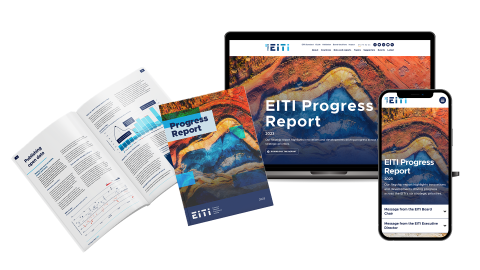
Zambia hones in on fiscal sweet spot for mining
Zambia hones in on fiscal sweet spot for mining
Government takes bold step of requesting financial models from companies
Zambia, Africa’s second-largest producer of copper, is highly dependent on mining as its major productive industry. Mining contributes to 68% of the country’s foreign exchange earnings and 73% of total export value, according to the latest EITI reporting. Zambia has made radical changes to its mining taxation policies over the past decades, giving rise to much debate and discussion in the sector. The government recently changed its minerals tax regime for the 10th time in 16 years in an attempt to find the “sweet spot” where both revenues and foreign investment are maximised – a challenge for any government. However, when a raise of 1.5% on mineral royalties came into force on 1 January, mining companies announced that over 20,000 jobs would have to be cut due to higher production and operating expenses.
Using data to address perceptions and inform policy
The government and civil society groups are urging Zambia’s mining companies to be more transparent about how the tax hike is affecting their profitability, by releasing their financial models. Mining companies have now submitted data to the government, which is now in discussions with the mining industry on the quality and type of data needed. Financial modelling allows revenue flows from a project to be tracked and can reveal whether the correct amount of tax was paid by companies. “Financial modelling in the EITI context could be thought of as ‘next level reconciliation,” says Johnny West, founder of OpenOil. “Modelling goes a stage further than comparing figures: it analyses the terms of a contract and the economics of the project, such as costs and real prices achieved. It then creates projections of what should have been paid by companies to the government under the existing agreement.”
Extractive companies usually have entire teams dedicated to building financial models, which link the expected production profile, prices, capital and operating expenditure and corporate tax rates to the projected cash flow of the project and its profitability. Many governments lack the capacity to do such analysis, but efforts are underway to bridge this gap. In December 2018, Zambia EITI undertook a financial modelling workshop organised under DfID’s Extractives Hub project, with technical support from OpenOil and a Kenyan financial services company called Invhestia Africa, to build capacity in government agencies, and help inform public debate and government policy on taxation in the mining industry. The Zambian government has since requested more detailed evidence from mining companies on how royalty rate changes will affect their operations. By deepening the government’s technical understanding of the issues, namely production costs, Zambia’s extractive industry comes closer to finding a sustainable solution for its fiscal regime.
The Zambian government has therefore taken the bold step of joining Sierra Leone, Côte d'Ivoire and a handful of other countries in requesting financial models from companies. Arguments over commercial sensitivity are an ongoing issue in the extractives, but there is a growing sense that the government – and, in most cases, the public – have a right to this information, as resources ultimately belong to the countries’ citizens.
While the effectiveness of this approach is yet to be determined, the response so far has been positive. The Zambian government has reached out to Extractives Hub, seeking to continue the training on financial modelling and analysis of data so that a retrospective analysis of royalty and tax payments can be streamlined. This will be key for furthering the understanding of the implications of tax policy changes and building confidence among the public that the mining companies are paying what is due.
Zambia 2016 EITI data published
EITI data is the main source of information for the government when conducting fiscal analyses on mining sector income. The 2016 ZEITI report published in December reported that mining sector revenues remained steady compared to 2015 and were worth just under USD 1 billion in that year. Production rates also increased in 2016 by about 10% compared to 2015 in the copper sector, the largest contributor to revenues. The report includes more recent data on the industry, including an overview of the latest tax reforms, data relevant for agencies seeking to maximise domestic resource mobilisation and a recommendation that tax payments be audited. There were some errors and omissions, however, which has highlighted the need for uniform reporting and hastened the impetus for Zambia EITI to move towards online systematic disclosure of extractive data. Other data disclosed includes project-level payments and information on the ultimate beneficial owners of some of the largest mining companies. Together, project-level data, ownership information and revenue data make up ‘the transparency triangle’ that can be used by policy makers to develop fiscal models when considering changes to the taxation regime.
Fiscal modelling is not a silver bullet, but it is a useful tool to understand and inform technical discussions on maximising government revenues from the extractive sector. The Zambia EITI Multi-Stakeholder Group will continue to play a role in representing and empowering the stakeholders concerned in order to find a common solution.
Related content



